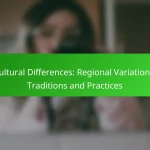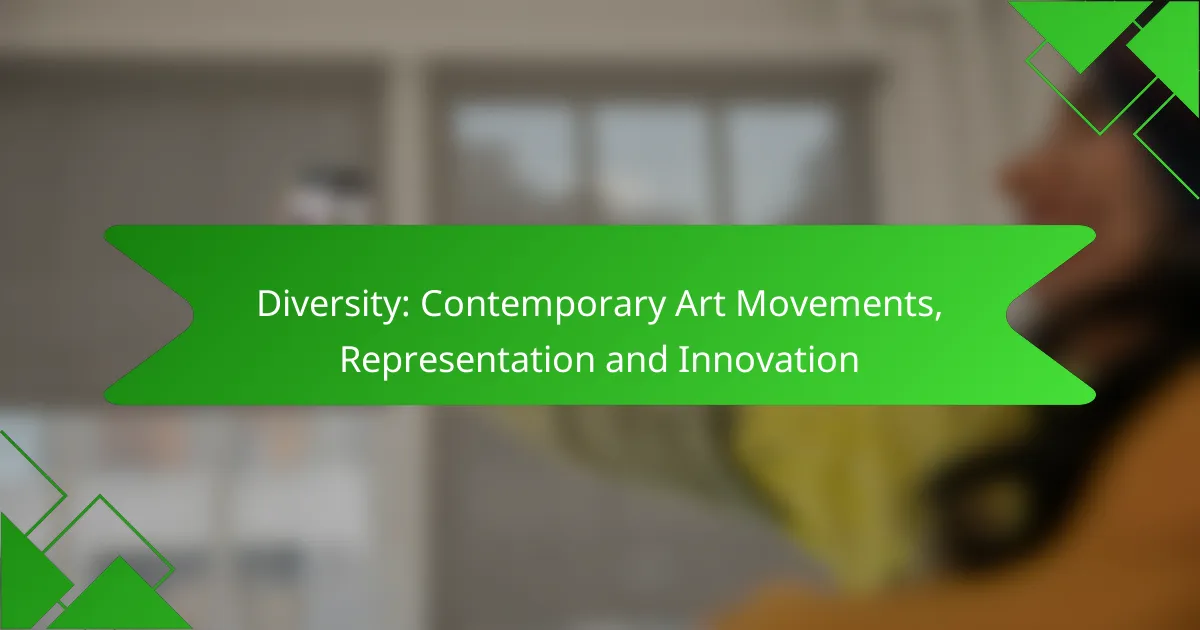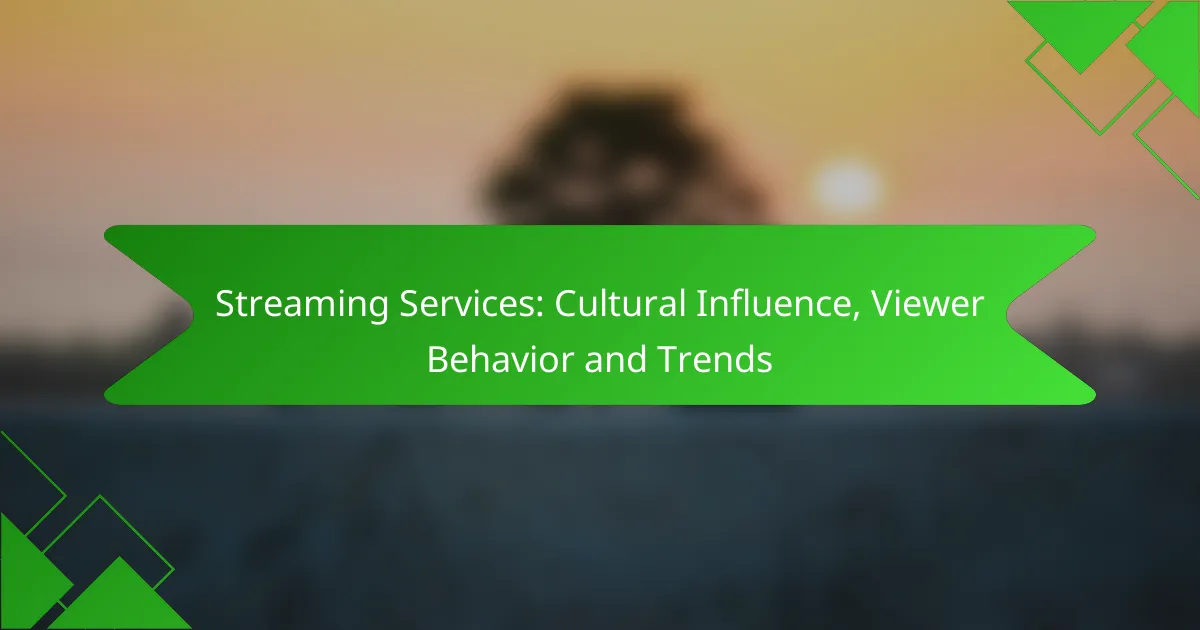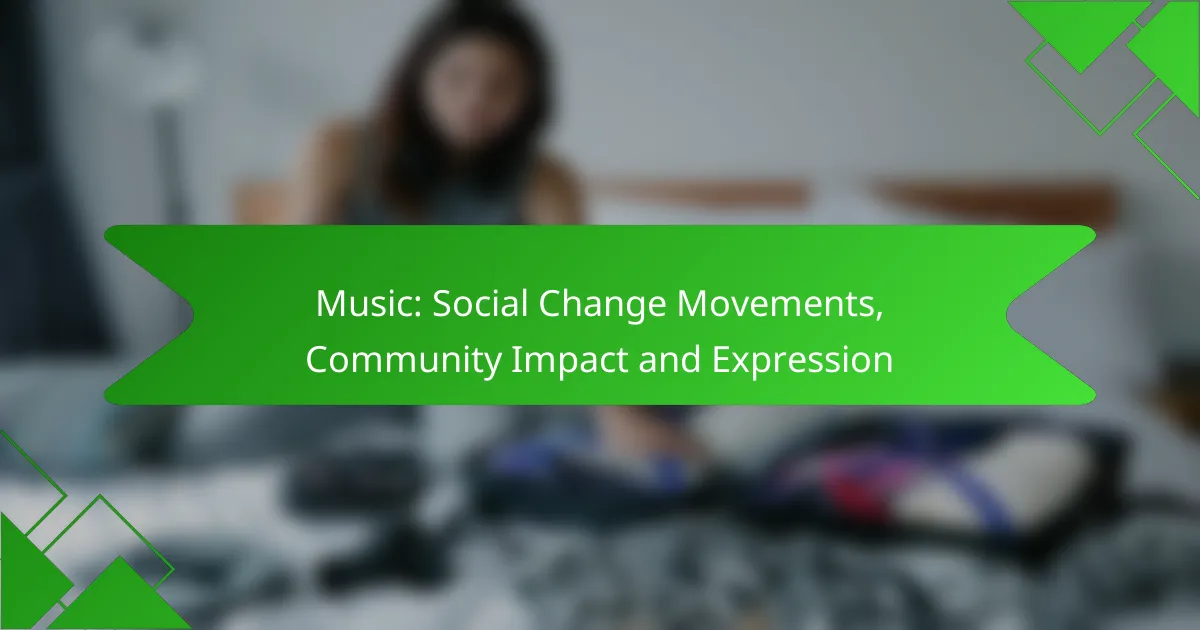Diversity plays a crucial role in shaping contemporary art movements, enriching the creative landscape with a multitude of voices and perspectives. By embracing various cultures and experiences, artists are able to challenge traditional narratives and promote inclusivity, leading to innovative expressions in the art world.
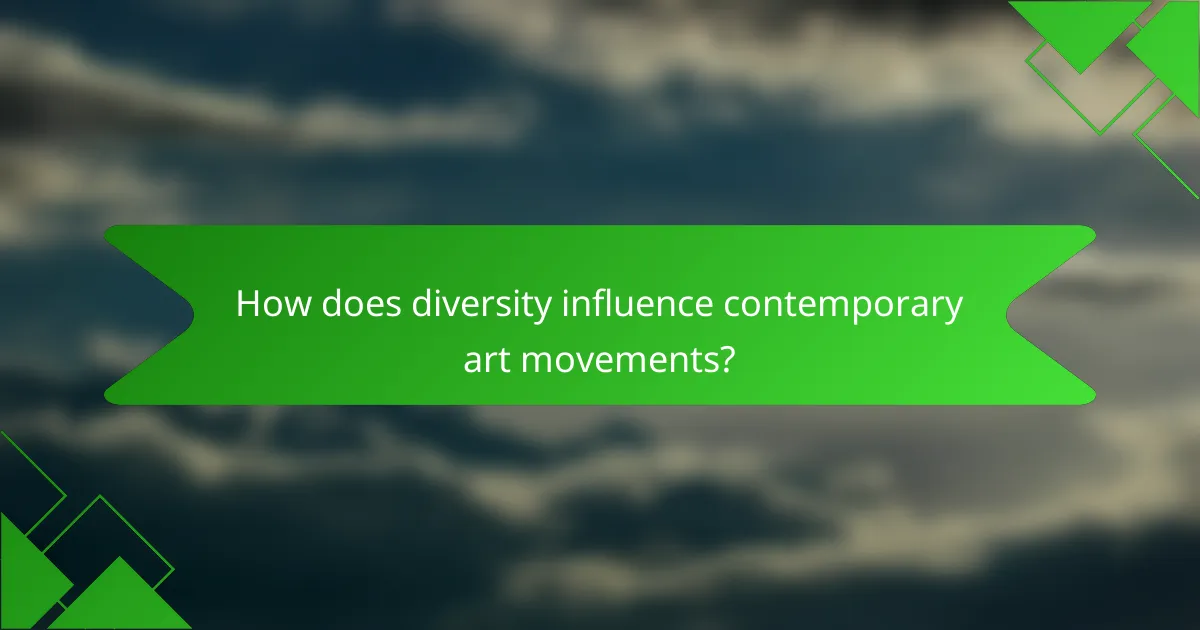
How does diversity influence contemporary art movements?
Diversity significantly shapes contemporary art movements by fostering a richer array of voices and perspectives. This influence enhances creativity and innovation, allowing for a more inclusive representation of various cultures and experiences in the art world.
Increased representation of marginalized artists
The rise of diversity in contemporary art has led to greater visibility for marginalized artists, including women, people of color, and [censured] individuals. This representation challenges traditional narratives and brings forth unique stories that resonate with broader audiences.
Art institutions and galleries are increasingly prioritizing diversity in their exhibitions and collections. Initiatives like grants and residency programs specifically aimed at underrepresented groups help to elevate their work and ensure their voices are heard.
Broader perspectives in artistic expression
Diverse backgrounds contribute to a wider range of artistic expressions and themes. Artists from various cultures bring their unique experiences and viewpoints, enriching the dialogue within the art community.
This variety encourages collaboration and cross-cultural exchanges, resulting in innovative art forms that blend different traditions and techniques. For instance, contemporary artists might incorporate elements from traditional crafts into modern installations, creating hybrid works that challenge conventional boundaries.
Innovative techniques and styles
Diversity in contemporary art movements often leads to the development of new techniques and styles. Artists experiment with materials and methods influenced by their cultural heritage, pushing the limits of what art can be.
For example, the integration of technology in art has been accelerated by diverse influences, leading to the rise of digital art, interactive installations, and multimedia performances. This innovation not only captivates audiences but also expands the definition of artistic practice in today’s world.
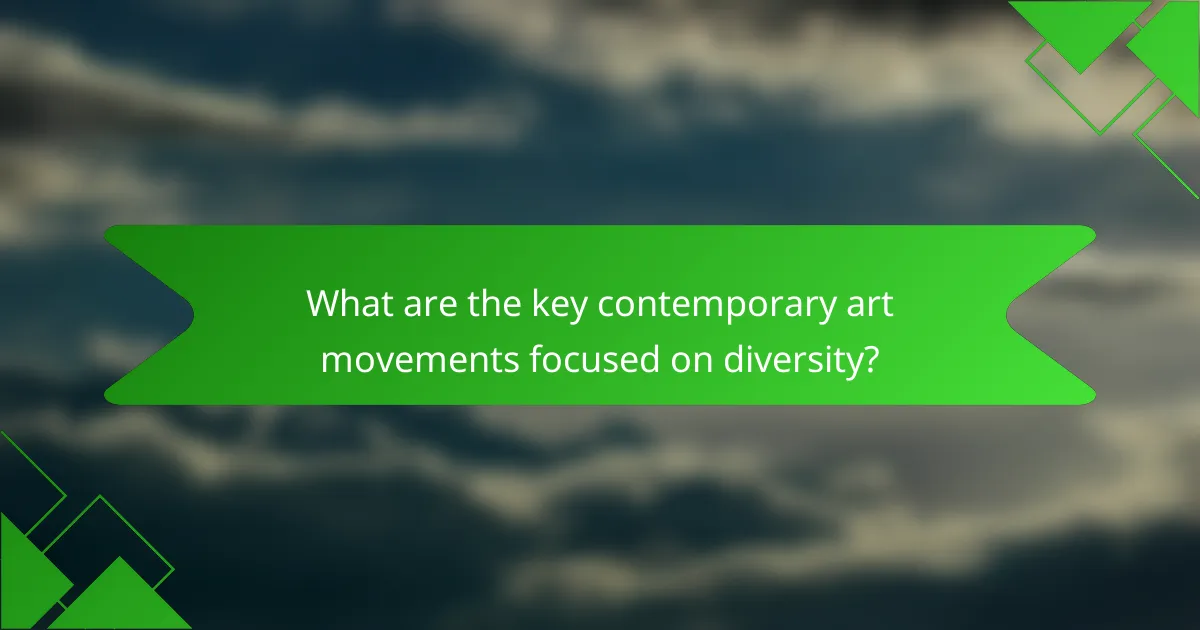
What are the key contemporary art movements focused on diversity?
Key contemporary art movements focused on diversity include Afrofuturism, the Feminist Art Movement, and Indigenous Art Practices. These movements aim to challenge traditional narratives, promote representation, and foster innovation within the art world.
Afrofuturism
Afrofuturism blends African culture with technology and science fiction, creating a unique narrative that reimagines the future through a Black lens. This movement often explores themes of identity, history, and social justice, using visual art, literature, and music to envision alternative futures.
Artists like Sun Ra and Octavia Butler have paved the way for contemporary creators, who use Afrofuturism to address issues such as systemic racism and cultural erasure. Exhibitions often feature vibrant colors and futuristic motifs, encouraging viewers to rethink the intersection of race and technology.
Feminist Art Movement
The Feminist Art Movement emerged in the late 20th century, aiming to address gender inequality in the art world. Artists within this movement challenge patriarchal narratives and highlight women’s experiences through various mediums, including painting, sculpture, and performance art.
Key figures like Judy Chicago and Cindy Sherman have used their work to confront societal norms and advocate for women’s rights. This movement has led to increased visibility for female artists and has influenced contemporary discussions about gender and representation in art.
Indigenous Art Practices
Indigenous Art Practices encompass a wide range of artistic expressions rooted in the traditions and cultures of Indigenous peoples. These practices often reflect a deep connection to land, spirituality, and community, serving as a means of cultural preservation and storytelling.
Contemporary Indigenous artists, such as Yvonne Koolmatrie and Richard Bell, utilize traditional techniques alongside modern approaches to address contemporary issues faced by Indigenous communities. Their work often critiques colonialism and promotes cultural resilience, making it essential for understanding the broader narrative of diversity in art.

How can artists promote diversity in their work?
Artists can promote diversity in their work by actively engaging with various communities, incorporating a range of narratives, and addressing social justice themes. This approach not only enriches their art but also fosters inclusivity and representation within the art world.
Collaborative projects with diverse communities
Collaborating with diverse communities allows artists to gain insights and perspectives that may be outside their own experiences. These projects can take many forms, such as workshops, public art installations, or community-driven exhibitions.
For effective collaboration, artists should prioritize open communication and mutual respect. Engaging with community leaders and members can help ensure that the projects authentically represent the voices and stories of those involved.
Incorporating diverse narratives
Incorporating diverse narratives into artwork can challenge dominant cultural perspectives and highlight underrepresented voices. Artists can achieve this by researching and integrating stories from various cultures, histories, and experiences into their pieces.
Using mixed media or interdisciplinary approaches can enhance the representation of these narratives. For instance, combining visual art with storytelling or performance can create a more immersive experience that resonates with a broader audience.
Engaging in social justice themes
Engaging in social justice themes allows artists to address pressing societal issues and advocate for change through their work. This can involve tackling topics such as inequality, discrimination, and environmental justice, which are relevant across many communities.
Artists should consider how their work can provoke thought and inspire action. Utilizing platforms such as social media or community events can amplify their message and reach a wider audience, fostering dialogue around these critical issues.
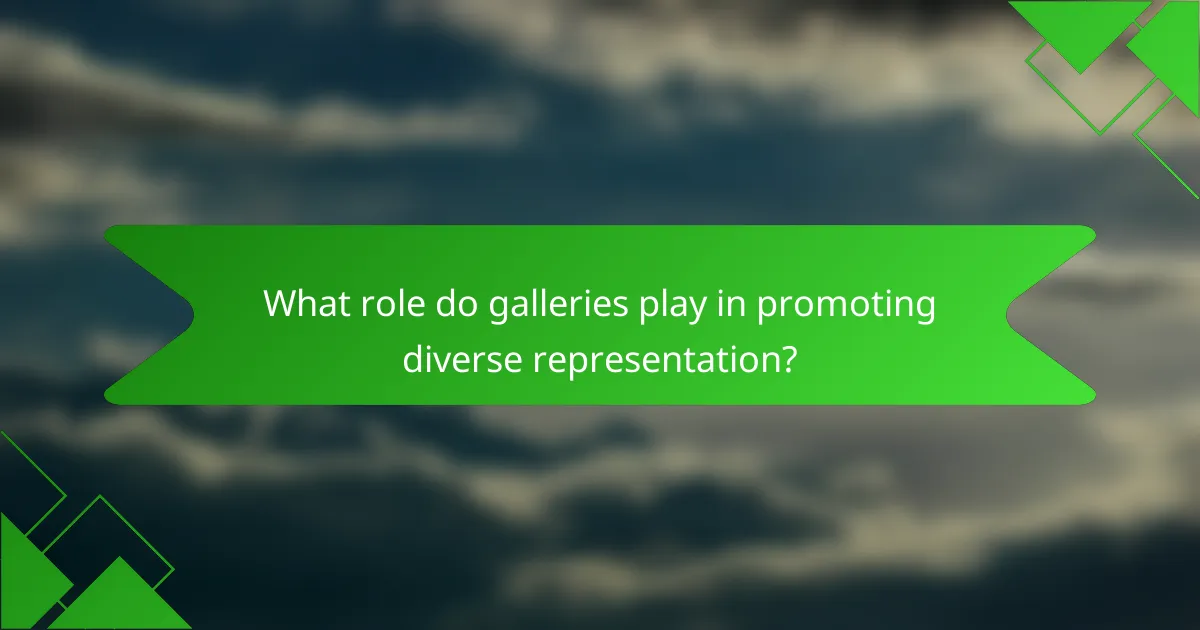
What role do galleries play in promoting diverse representation?
Galleries play a crucial role in promoting diverse representation by providing platforms for artists from various backgrounds and cultures. They curate exhibitions that highlight underrepresented voices, fostering a more inclusive art community.
Showcasing underrepresented artists
Galleries can showcase underrepresented artists by dedicating exhibition space specifically for their work. This not only increases visibility but also helps to challenge the traditional narratives often seen in mainstream art. For instance, a gallery might host a monthly feature for emerging artists from marginalized communities, allowing them to present their unique perspectives.
Additionally, galleries can implement artist-in-residence programs that focus on diversity, providing these artists with resources and support to create and exhibit their work. This approach can lead to innovative art that reflects a broader range of experiences and stories.
Curating inclusive exhibitions
Curating inclusive exhibitions involves selecting artworks that represent a variety of cultures, genders, and backgrounds. Galleries should aim for a balanced representation, ensuring that no single perspective dominates the narrative. This can be achieved by collaborating with diverse curators who understand the importance of inclusivity in art.
Moreover, galleries can engage in thematic exhibitions that explore issues related to identity, race, and social justice. By doing so, they not only educate their audience but also create a dialogue around these critical topics, fostering a deeper understanding of diverse experiences.
Partnering with community organizations
Partnering with community organizations allows galleries to connect with local artists and audiences, enhancing their outreach and impact. These collaborations can take the form of workshops, community art projects, or joint exhibitions that highlight local talent and cultural heritage.
Such partnerships can also help galleries tap into the unique perspectives and needs of the communities they serve. By actively involving community members in the artistic process, galleries can create more relevant and resonant art experiences that reflect the diversity of their surroundings.
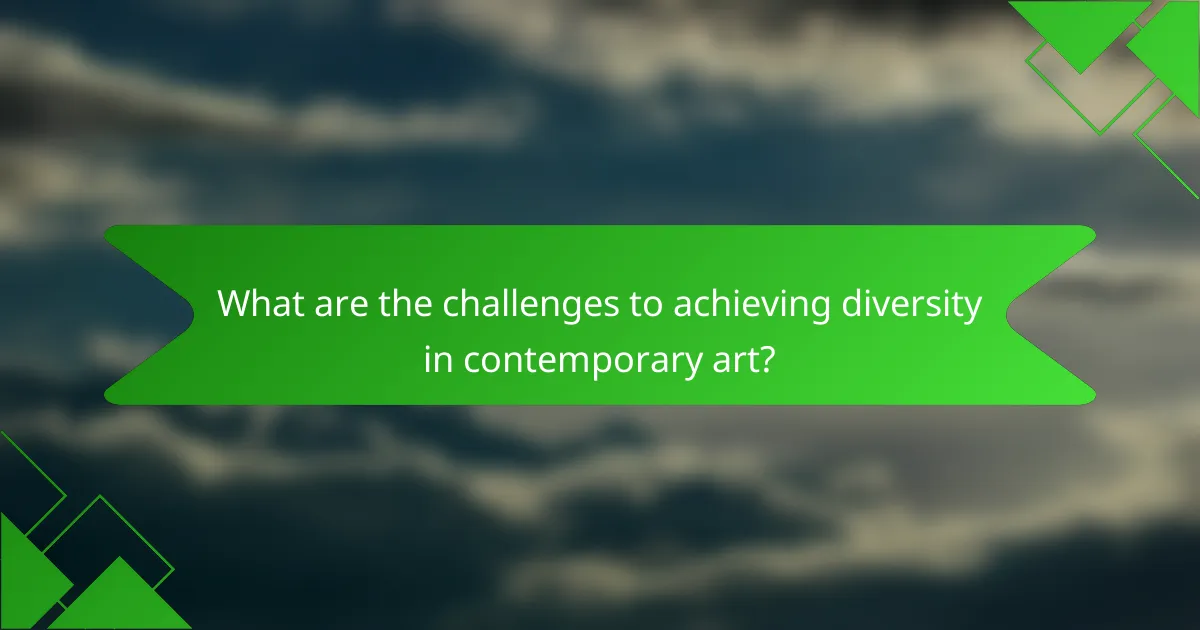
What are the challenges to achieving diversity in contemporary art?
Achieving diversity in contemporary art faces several significant challenges, including systemic barriers, funding disparities, and limited access to exhibition spaces. These obstacles hinder the representation of diverse artists and their innovative contributions to the art world.
Systemic barriers in the art market
Systemic barriers in the art market often manifest through entrenched biases that favor established artists and traditional narratives. This can result in a lack of visibility for artists from underrepresented backgrounds, making it difficult for them to gain recognition and support.
Additionally, art institutions may prioritize relationships with well-known galleries and collectors, further marginalizing diverse voices. Addressing these systemic issues requires a concerted effort from stakeholders to create more inclusive practices and policies.
Lack of funding for diverse artists
A significant challenge for diverse artists is the lack of funding opportunities available to them. Many grants and sponsorships tend to favor artists who are already established, leaving emerging talents without the necessary financial support to develop their work.
To counter this, organizations and foundations can implement targeted funding initiatives aimed at supporting diverse artists. This could include mentorship programs, micro-grants, or partnerships with businesses to foster a more equitable distribution of resources.
Limited access to exhibition spaces
Limited access to exhibition spaces significantly impacts the visibility of diverse artists. Many galleries and museums are often hesitant to showcase works that challenge conventional aesthetics or narratives, which can stifle innovation and representation.
To improve access, alternative exhibition models such as pop-up galleries, community art spaces, and online platforms can be utilized. These venues can provide diverse artists with the opportunity to display their work and engage with broader audiences, thereby enhancing their presence in the art world.
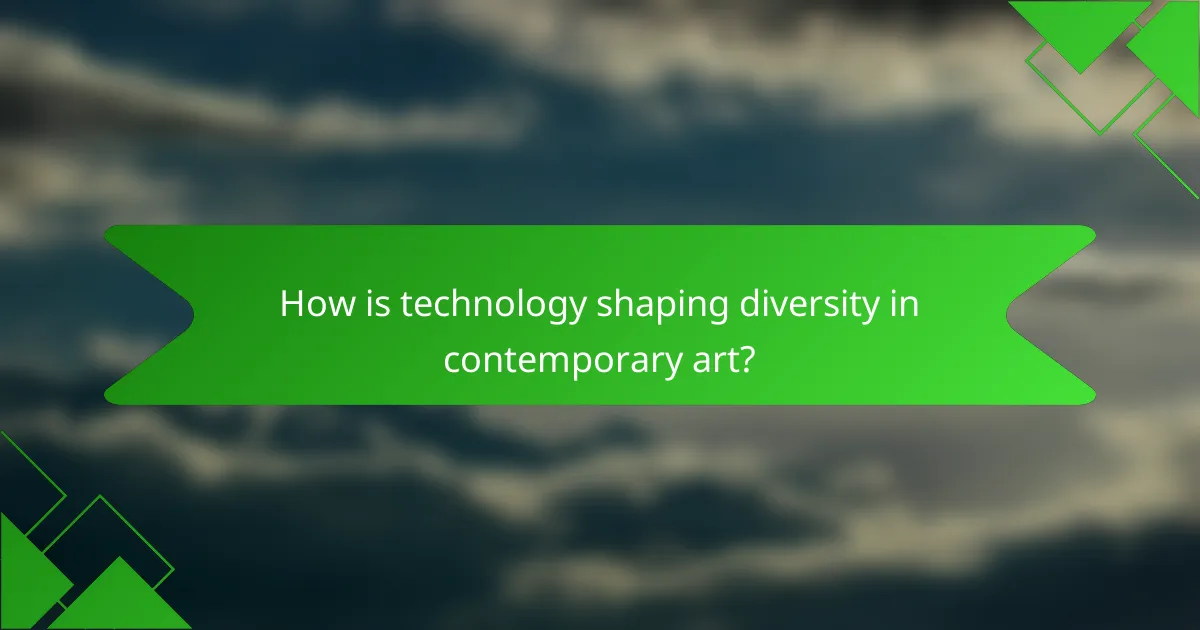
How is technology shaping diversity in contemporary art?
Technology is significantly enhancing diversity in contemporary art by providing platforms for underrepresented artists and fostering innovative expressions. Through digital tools and online spaces, artists from various backgrounds can showcase their work to a global audience, breaking traditional barriers.
Online platforms for diverse artists
Online platforms have become essential for diverse artists to gain visibility and connect with audiences. Websites like Instagram, Artsy, and Saatchi Art allow artists to share their portfolios and engage with potential buyers without the constraints of physical galleries.
These platforms often feature curated sections that highlight artists from marginalized communities, promoting inclusivity. Artists can also leverage social media to build their brands and network with other creatives, enhancing their reach and opportunities.
Virtual reality experiences
Virtual reality (VR) is transforming how art is experienced, allowing for immersive environments that can reflect diverse narratives. VR art installations can transport viewers into different cultural contexts, providing a deeper understanding of various artistic expressions.
Artists can create interactive experiences that engage audiences in unique ways, making art more accessible. For example, VR exhibitions can be hosted online, enabling participation from people around the world, regardless of their location or socioeconomic status.

